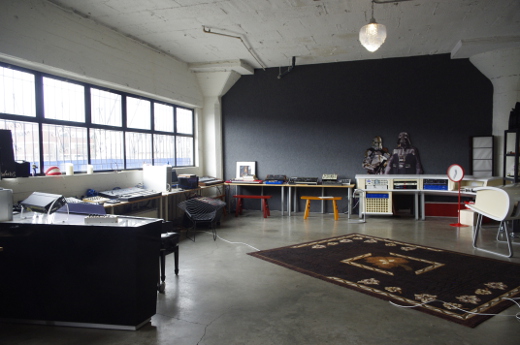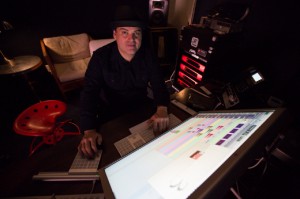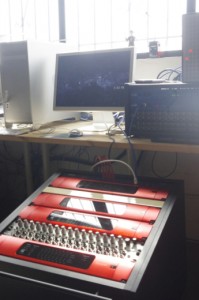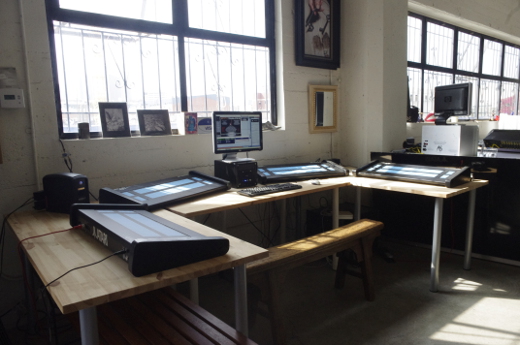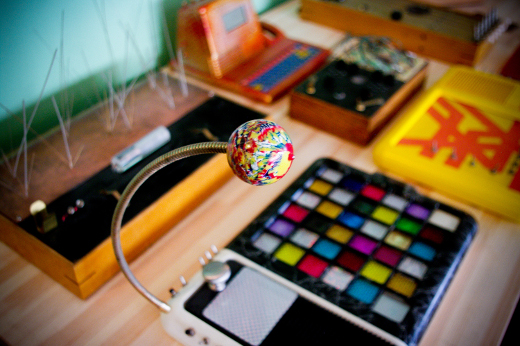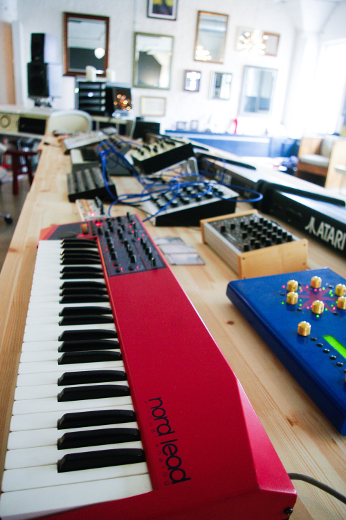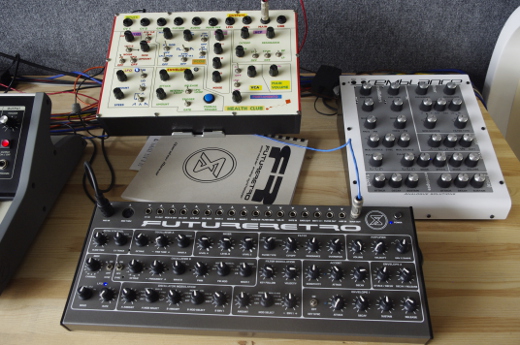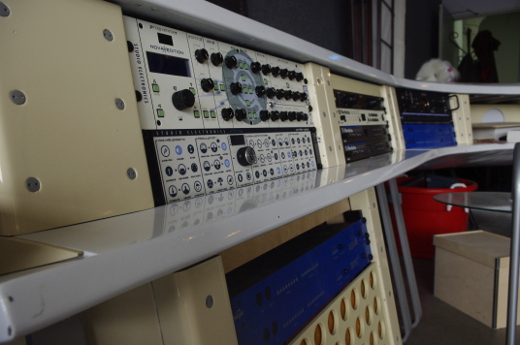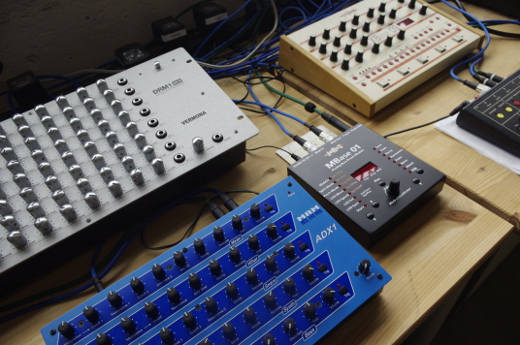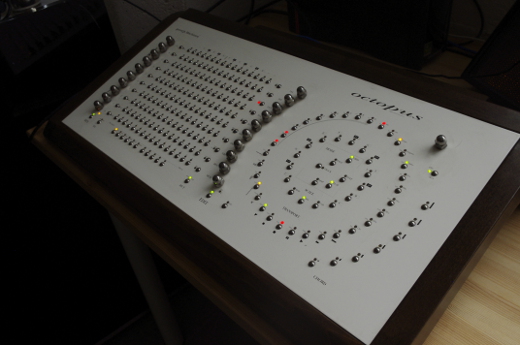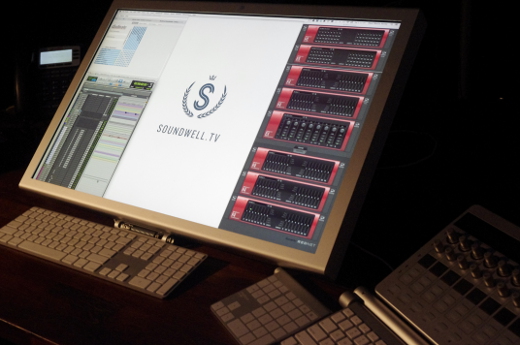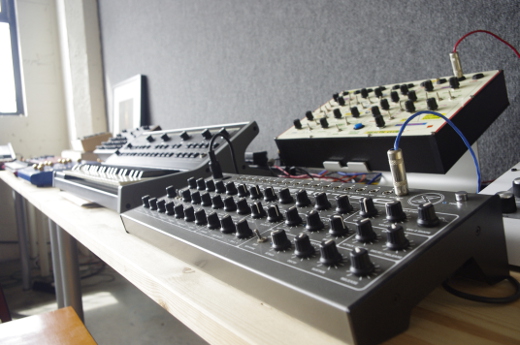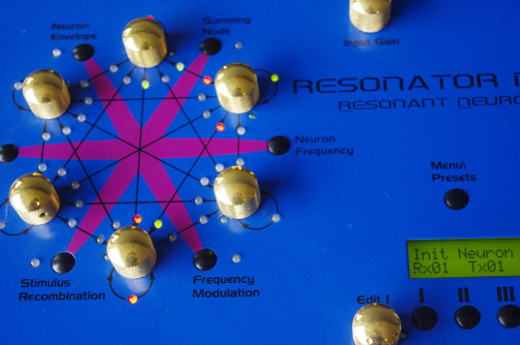Composer Cribs: Dean Martin Hovey — Incredible Networking at Soundwell, Los Angeles
Talk about a place to play.
With Soundwell in Los Angeles, composer Dean Martin Hovey has a place where his imagination really can run wild. A constant stream of film (Austin Powers, David Lynch, Wim Wenders), commercials, and theme park installations are all in the mix at his utterly unique studio – a facility where synths, DAWs, original music, and sound design all converge and recombine.
Hovey’s studio is deeply interconnected, thanks to an ultra-flexible design and an intensive backbone of Rednet, Focusrite’s modular Ethernet-networked audio interface, which provides him with an extremely scalable near-zero latency audio distribution system.
Armed with this system, an inspiring environment, expressive tools, and a sonically-inclined mind, Hovey is always ready to go to work (check out his we couldn’t wait to come inside this Composer Crib.
Composer Name: Sound Designer / Composer – Dean Martin Hovey
Website: http://www.Soundwell.tv
Location: Los Angeles, California
Soundtracks Served: Film, Advertising, Gadget Sonification, Themed Entertainment, Gaming and Sound Art Installations…We are also developing three new audio based products in partnership for a global brand.
Clients/Credits: Recent clients include:
Commercials — Electronic Arts, Nike, Adidas, Jello, Chase, Volvo
Cinema — Academy Award Winning Director Robert May’s new film Kids For Cash; Jennifer Elster and Yoko Ono’s new film The Being Experience; Patrick Ian-Polk, Monique and Isaiah Washington’s new film Blackbird; Jamie Marshall and Catherine Hardwicke’s new film Guilty Innocents.
Themed Entertainment — Insidious VIP Tour Installation at Universal Studios, Burbank California.
Sound Arts Installation — “Cinema Reset” at the New Orleans Museum of Contemporary Arts.
My past work can be seen on David Lynch’s Lost Highway, Wim Wenders End Of Violence, Tony Kayes’ American History X and the Austin Powers series of films.
Also on near-1000 commercials and specialty audio-based initiatives.
Big Premiere: Soundwell was founded 2009 – previous to that I was the Global Director Of Sound at Elias Arts for 8 years or so…
Room Inspiration: I have a studio in Santa Monica that serves as a premiere presentation space, however my main creative work is done in my Sound Lab based in the Downtown Los Angeles Arts District.
When I created the Downtown space, it was at a time where you could still find large open factory type spaces at a reasonable price. I was very interested in having all my gear online simultaneously, and to do so I knew that I’d need at least 2200 SF of open space. I was lucky to find exactly the right space in the heart of Arts District and it has served me quite well creatively.
With a sizable space and a great creative location I became focused on developing a workflow system that could maximize the generating capability of my gear in an immediate and flexible way.
Key Personnel: I feel privileged to have an amazing freelance roster of talent including the works of Jacqueline Gordon, Justine Regele, Fred Howard and Patrick Giraudi. My East Coast Sales Representative is Maggie Klein, Midwest is Cathi Connor, and our newest member, Meg Todd, represents both the West Coast and Texas.
Workflow Requirements: For me I/O expandability, portability and also the ability to generate quality original sound quickly was the basis for my studio design.
So in my studio I’ve incorporated the new Focusrite RedNet system as my center hub. The RedNet system gives me the ability to have all of my sound sources and effects boxes online simultaneously without the need to re-patch or change any path assignment mid project.
My RedNet System is currently the largest privately owned system utilizing
(5) RedNet 2’s, (1) RedNet 1, (3) RedNet 5’s and (1) RedNet 4.
The RedNet system is linked to a Dual Avid Audio Pro Tools HDX system, a Logic Pro X System, and a custom Hotz and Ableton Live System all at the same time as my usual setup.
This system allows me 96 channels of I/O while interfacing with four different DAWS simultaneously.
The great thing about the RedNet architecture is that it will serve as the single audio I/O system for my entire studio and link all of my DAWS together as one system, without the need to have multiple singular systems clocking together as is the common method.
The result: I have one system utilizing multiple DAW’s and computers, all talking together as one large living and breathing sound machine.
Most of the time I will trigger my synthesizers and miscellaneous devices using Logic, my Hotz system or my Octopus analog sequencer in my main room, and track to my Pro Tools HDX system in my back Mixing room. Depending on the project type, I will sometimes have the need to record to my other DAW’s simultaneously.
This system allows great flexibility.
For instance: I sometimes trigger all of my 40+ analog synthesizers at the same time, record the channels discreet in Pro Tools, thus giving me an incredible first pass sound palette particularly for sound design projects.
The clarity of the RedNet Interfaces allow this aggressive layering and stacking of voices to remain clear and full of detail. This is something that I haven’t had as much luck with utilizing other interfaces in this manner – it’s a powerful way to generate, very quickly, new design source without locking myself into any permanent decisions sonically. Everything remains discreet so that I can remove, stack or mix everything together in a way I feel appropriate for a given project. Particularly in Sound Design this method has created some incredible new palettes very quickly that would certainly have been impossible and quite time consuming using another method.
All of my DAWs are communicating over the Dante’ network so I can monitor all my DAWs from any room, Trigger any synth from any DAW and record any source to any DAW from any one of my rooms – that is truly powerful.
This system is completely expandable. Any Dante’ enabled device will plug into any of my Layer 3 Ethernet hubs and show up as an active device for use with all of my DAW’s.
The signal path, particularly from my synthesizers will go through an array of factory-conditioned Synth Drivers converting the signal from unbalanced to balanced – also giving me a boost in signal volume.
From the Synth Drivers the signal goes directly into the RedNet 2’s – onto the Dante’ network and into all of my DAWS.
Once the sound has been tracked, I have the option to send and return through an array of Summing Mixers and Effects boxes including: the Speck X-Sum, a Schippman Ebb and Flut, a KNAS Moisturizer, a Jomox T-Resonator, a VF-11 Vocoder, a Metasonix Hellfire Modulator and an array of Analogue Solutions Modular gear as a short list, not including my traditional gear such as reverb boxes.
Picture This: There is no projection in the Downtown Space because it is more of a generating type creative space. I have some of the older 30 inch Apple Monitors which I like very much placed around the studio.
The Santa Monica studio is more of a traditional presentation space for client-based playbacks.
Audience Accommodations: The downtown space is truly a work space. A comfortable lounge but kind of a sonic sandbox to play in. Not a stuffy environment, but rather a toy shop designed for new sound development.
Complex Cue: All Projects can certainly be challenging but Themed Entertainment I think present unique situations. Themed installations are rarely created in spaces that are designed for good sound – in fact many of them will take place outside, or in the structure of a building itself.
While developing the Sound and Mix for the Universal Studios Insidious Installation, we designed a Soundscape to be played back from six Window points inside a two story house as well as an array of Trees, Oil Drums, Wooden Shacks and additional Windows sets covering an area of about 100 yards.
How do we create tracks that can be played back in sync with the tour? This clearly wasn’t going to be a 5.1 mix!
We did the initial design work and Pre-mix in studio which took about 10 days for creative development.
We then took my RedNet system onsite to the Universal Backlot. We lined discreet outputs from my I/O directly into each speaker – a total of 16 and also 2 subs. We dialed in the Mix and additional Sound onsite in the open air right next to Jaws Lake. The speakers were clustered in a variety of locations. All sound points are tied into the story line, and needed to work together as a group.
Once the mix was finished, we output discreet mono files to be triggered from the Video Cue system in line with the corresponding video projections. It went off without a hitch and sounded amazing.
There were also motion sensors and foot switches that trigger additional sound coming off remote playback systems on exit – Super fun…
The Site Mix took place over 36 hours in three nights. Then the additional trigger devices were set up the following day.
Priceless Advice: I think it’s very important to be well prepared. Learn as many styles as you can, but also experiment with trying to find your own sound, your own unique creative self. Early in your career especially try to work as much as you can – even on free projects to get a solid reel together. Your reel is a very important tool to illustrate your creative work to potential clients and future working relationships.
— Dean Martin Hovey, Sound Designer/Composer, Soundwell







